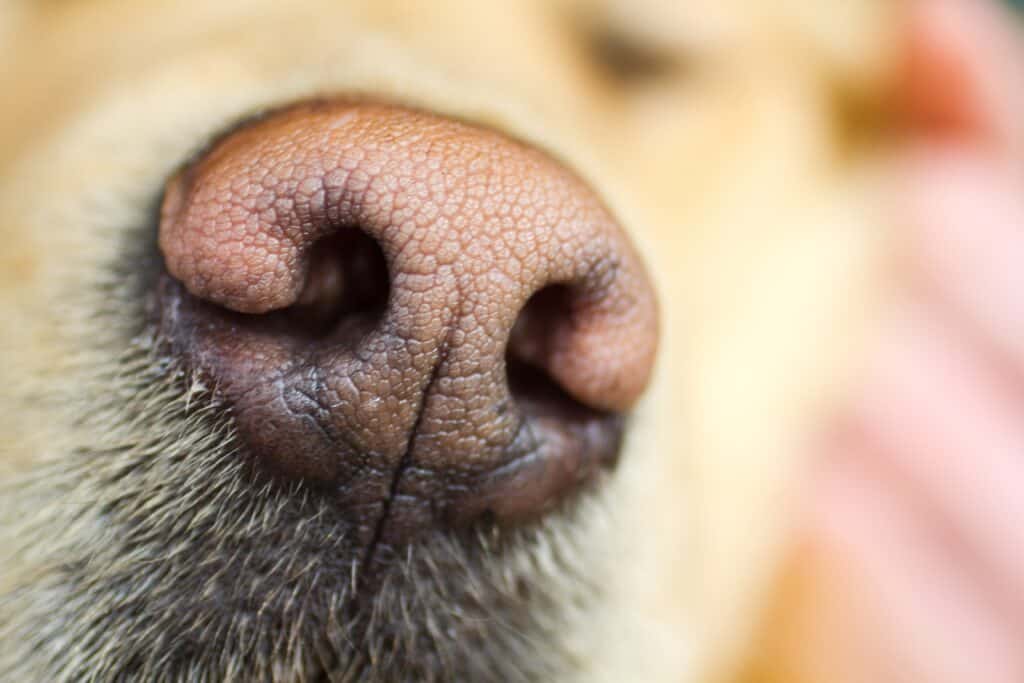How much do you know about termites? My first interaction with termites was playing the mid-1990s video game, Banjo-Kazooie. One of the early levels of the game features a giant termite mound that must be navigated by the eponymous characters (as an eight-year-old, I remember that encountering several large termites on that game was particularly fear-inducing).
Since that point, my understanding and knowledge has progressed. Instead of being fearful that the world is going to be overthrown by an army of giant termites, my concern actually pertains to how their lack of size can make them hard to identify. At a quarter of an inch long, termites are small creatures, yet they are able to wield significant damage. They are capable of chewing through wood, and potentially make buildings structurally unsafe. They can wreak havoc for businesses and homeowners alike.
What is the best method for identifying a potential termite infestation? Well, not for the first time, humans can rely on dogs to do the heavy lifting for them. It is possible for dogs to detect termites because of their extremely powerful olfactory systems, allowing them to alert their human handlers that termites are present. This early identification can prevent structural damage as pest removal specialists are able to locate and remove the infestation.
In this article, we’ll take a look at how dogs are trained to detect termites, and scenarios where it may make sense to have a termite detection dog available.
The science behind detection dogs
At this point, the strength of a dog’s nose is common knowledge. Yet many people do not know just how powerful a dog’s nose is, particularly in comparison to humans.
On average, dogs have up to 300 million olfactory receptors in their noses. By comparison, humans have just six million. This powerful sense of smell means that dogs can detect the faintest trace of scent in extremely large areas, and makes them ideal candidates for assisting humans in many areas of life. Whether it’s a bed bug detection dog sweeping through an apartment complex, a conservation detection dog used to combat wildlife smuggling, or a Police K9 trained to identify explosives, if a scent can be captured, a dog can be trained to find it.
The training process for a termite detection dog
Broadly speaking, the process for training a termite detection dog is very similar to training other types of detection dogs. The idea is to systematically train the dog to be able to identify and indicate on the target odor, and ignore and disregard other odors. Our training process at Synapse Canine typically works through the following steps:
- There are a couple of prerequisites. With any detection discipline, it is important to have sample odor to work with. For termites, this requires access to varying quantities of the insect, as the odor profile changes depending on how many termites are present. In addition, we always carry out a suitability assessment for any dog that has been chosen for termite detection work. If no dog has been selected, we can also help with picking the right candidate.
- The dog is imprinted on the odor of termites. The imprinting process will involve the dog being exposed to the live odor, and systematic training to create positive associations when the odor is discovered.
- As time progresses, the dog is taught an indication. We teach a passive indication such as a Sit or Down to avoid disturbing the potential site where termites are present. The dog performs this trained stationary behavior once it has discovered the source of the target odor.
- To improve the dog’s problem-solving skills, training exercises will increase in difficulty. Dogs are tested with real-world search scenarios that may be hard to access (such as crawl spaces and behind walls), and dog-handler teams will learn about search patterns. Other odors will also be introduced to create distractions and complexity. This process is known as proofing.
- Even when a dog has been trained to detect termites, regular maintenance training is necessary to maintain their progress.
Who needs a termite detection dog?
Termite detection dogs may seem like a niche pursuit. While families could potentially train their own dog to find termites, it can be a time-consuming process. If you already suspect you have termites in your home, then the time to train the dog has already passed, and you’ll likely need to contact a pest removal company for assistance.
Due to the frequency with which they are asked to deal with possible termite infestations, pest removal companies can actually benefit greatly from having a trained termite detection dog available. The accuracy of the dog’s nose, combined with their ability to easily maneuver around hard-to-reach areas (such as crawl spaces or basements), means a termite detection dog can be a valuable asset to the team. Home inspectors, insurance companies or property managers may also find a termite detection dog is useful.
In conclusion
Despite their tiny size, termites are capable of causing immense amounts of damage to property if they are not swiftly detected and removed. Some estimates indicate that Americans spend upward of $5 billion each year on termite detection, prevention and removal.
Having a fully-trained termite detection dog in your corner can help to minimize long-term property damage and bring peace of mind. Not for the first time, the power of a dog’s nose should not be underestimated.

